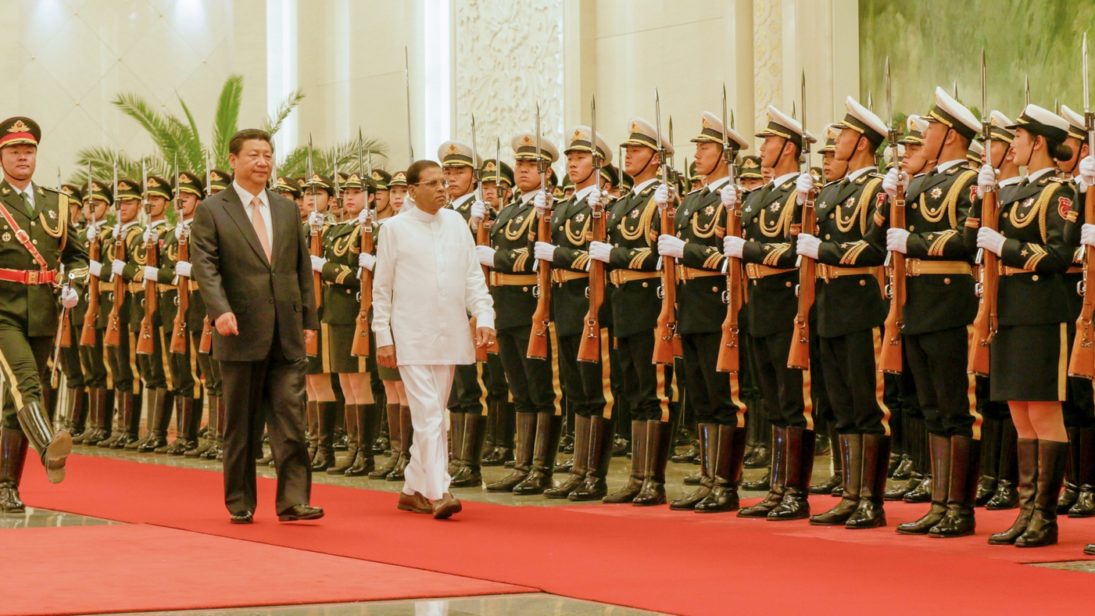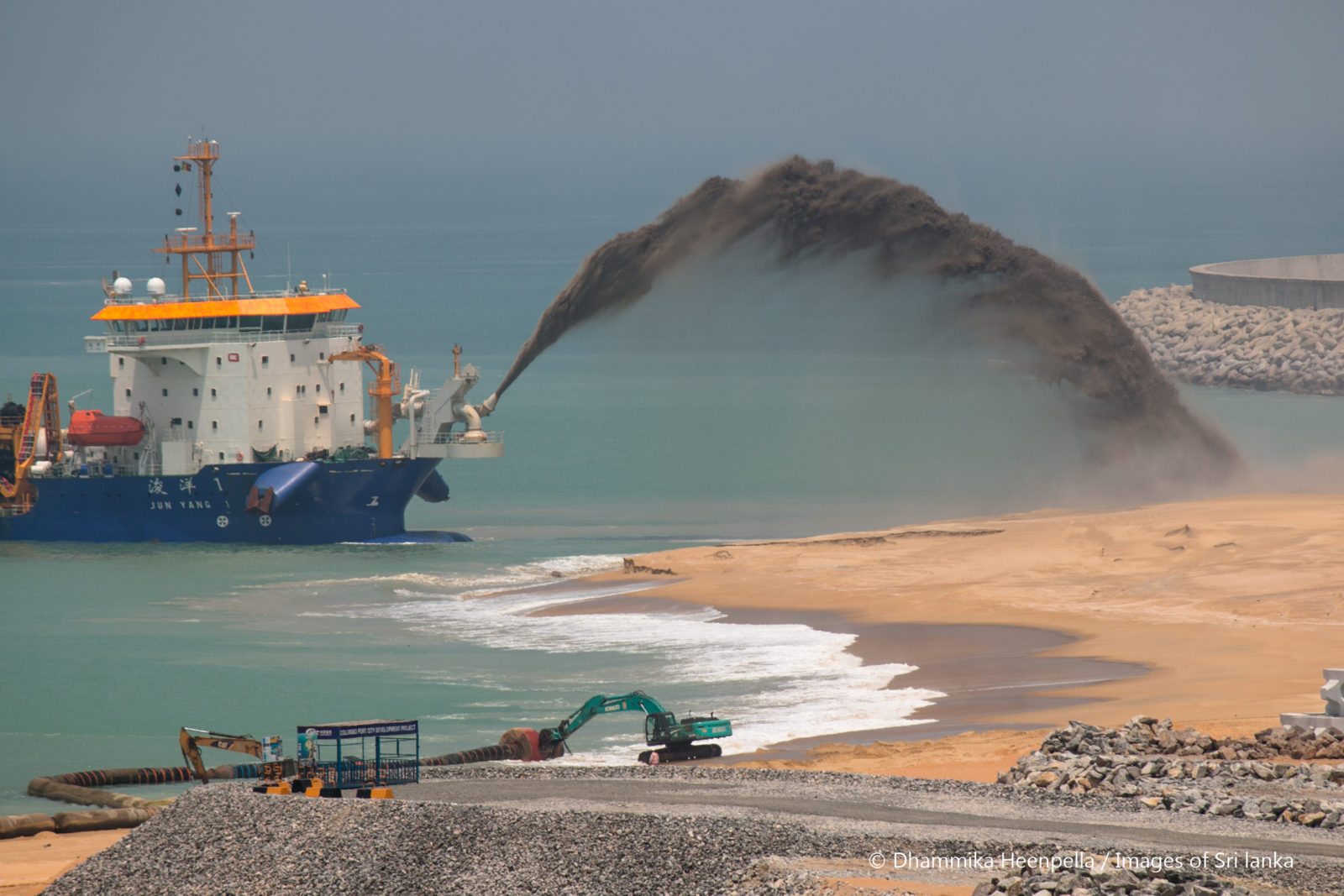
The current coalition government of Sri Lanka was elected in 2015 with a mandate to implement broad political and economic reforms. Unfortunately the young government struggled to provide a uniting vision of reform to its coalition partners, which slowed the reform process considerably. Even though the government focused on political reforms in 2015 and 2016, there were few realistic gains so that the government has now turned to focusing on economic reforms. This article will provide an overview of political and economic developments that took place in Sri Lanka in 2017 and offer insights into how they have shaped Sri Lanka’s economic and geopolitical trajectory.
Economic Challenges
Sri Lanka’s recent economic challenges have been well-documented. Emerging from a three-decade civil war in 2009, the economy was only able to reap the benefits of its post-conflict peace dividend for two years. This outcome was mainly due to the pursuit of protectionist economic policies under President Mahinda Rajapaksha. Worsening matters, Sri Lanka’s economic growth was heavily dependent on a debt-led development strategy that eventually led to the accumulation of unsustainable levels of foreign and domestic debt.
These trends came to a head in 2017 when Sri Lanka recommitted itself to pursuing broad economic reforms guided by the International Monetary Fund (IMF). Over the past year, Sri Lanka has introduced several new reforms such as a new “Foreign Exchange Act” and a new “Inland Revenue Act.” Combined with sector-specific reforms, these acts are expected to increase the ease of capital transfers through foreign investment while improving government mechanisms in tax collection.
While overall economic growth has remained low – largely due to the impact of droughts and monsoon floods on the agricultural sector – other economic indicators have been more promising. For instance, the government has been able to increase its tax revenue as a percentage of GDP from 9 percent in early 2015 to 14 percent at the end of 2017 while also increasing its export revenue and FDI flows in 2017 compared to the previous year.
Sri Lanka was also able to secure a significant political-economic victory in May by regaining generalized scheme of preferences Plus (GSP+) concessions from the European Union (EU). In 2010, Sri Lanka lost preferential access to the EU through GSP+ due to the government’s failure to adhere to human rights standards during the civil war. This action led to critical losses in the economy, especially in the apparel sector. Therefore, regaining GSP+ trade preferences is seen as a major boon to the export sector while also providing some credibility to the country’s foreign policy “reset” with the West, which first began in 2015.
Growing Chinese Influence
Even amid promising gains on the economic front, the historic accumulation of debt continued to burden the economic and political landscape of Sri Lanka in 2017. In the aftermath of the civil war, facing an urgent need to invest in infrastructure, Sri Lanka relied on Chinese financial support and investments. Given Sri Lanka’s strategic position on one of the most prominent sea-routes connecting China and Africa, the island was vital to China’s Belt and Road Initiative as well.
During this time, India was unable to re-establish ties with Sri Lanka as Indian politicians faced significant political pressure from South Indian constituencies to be tougher on Sri Lanka in the wake of alleged war crimes. As a result, Sri Lanka’s foreign policy shifted closer to Beijing while simultaneously increasing its economic dependency on the Asian giant. Now, Sri Lanka will faces an enormous foreign debt-servicing requirement of approximately $15 billion between 2019 and 2022 and much of this debt is owed to China through its Export-Import Bank and other Chinese lending sources.
In the short-term, Sri Lanka is now relying on debt-to-equity swaps with its creditors to ease its debt burden. Such swaps, particularly with China, will reduce the short-term debt burden while allowing broader economic reforms to kick-in and create more sustainable means of development finance through FDI and export revenue in the long-term. Sri Lanka’s recent decision to hand over Hambantota port to the state-owned China Merchants Port Holdings on a 99-year lease worth $1.1 billion along with the creation of a Special Economic Zone (SEZ) in the vicinity for Chinese investment is one such example of a debt-to-equity swap. This deal has raised concerns over a loss of sovereignty by local and regional politicians, especially among the opposition.

Reaction from New Delhi
Even though the Hambantota port deal and SEZ does not necessarily create a national security threat to India, China’s growing economic footprint in Sri Lanka has caused alarm in New Delhi. In response, India is now reportedly willing to invest $300 million in a joint venture to take over the operation of Mattala International Airport, which is a half hour’s drive from Hambantota port. India’s decision will not only help reduce Sri Lanka’s debt burden and dependence on China, but also act as a balancing force against any potential naval military expansion via Hambantota port.
A similar trend holds true in other areas of the Sri Lankan economy. China is in talks to develop a liquefied natural gas power plants in southern Sri Lanka while India is keen to invest in an oil tank farm in Trincomalee. This emerging competition demonstrates how Sri Lanka is seen as a strategic partner by both regional superpowers. If 2017 is any indication, India and China are intent on balancing one another in the economic sphere in order to mitigate any potential dependence by Sri Lanka on either party.
Long-term interests for Sri Lanka
Given Sri Lanka’s current fiscal position, debt-to-equity swaps and the sale/lease of assets can be considered a necessary evil to circumvent further economic issues. However, Sri Lanka’s future relies heavily on effective economic policy reforms to enable growth driven by private sector participation rather than reliance on the government. In 2017, the government has taken some important steps towards facilitating this transformation through a series of policy reforms. The success of these policies, however, depends on political consistency and a unified coalition government. Local elections in 2018 and a presidential election in 2020, however, will create significant political friction over the next two years that may potentially derail the reform process.
While the economic competition between India and China may appear to benefit Sri Lanka, it also poses several long-term threats. The island-nation should be careful not to facilitate an “assets race” between the two countries that exacerbates tensions. Secondly, the government should ensure Sri Lanka accrues a share of the economic gains from Chinese and Indian investments. Towards this end, joint ventures with leases rather than free-hold land transfers would alleviate concerns about national sovereignty and also ensure economic returns.
Finally, given Sri Lanka’s potential to become an economic hub in the region, it is vital that Indian and Chinese investments do not crowd-out investments from other sources. If each of these issues are prudently addressed, Sri Lanka should be able to navigate through its current economic concerns in 2018 while balancing both Indian and Chinese interests.
Editor’s note: This is the fifth piece in our 2017: Year in Review series. In this six-part series, our contributors assess the most significant domestic and foreign policy developments in Afghanistan, Pakistan, Bangladesh, India, Sri Lanka, and Nepal in 2017 and how these developments will impact the countries and the region in 2018. Read the entire series here.
***
Image 1: Maithripala Sirisena via Flickr.
Image 2: Dhammika Heenpella via Flickr.


